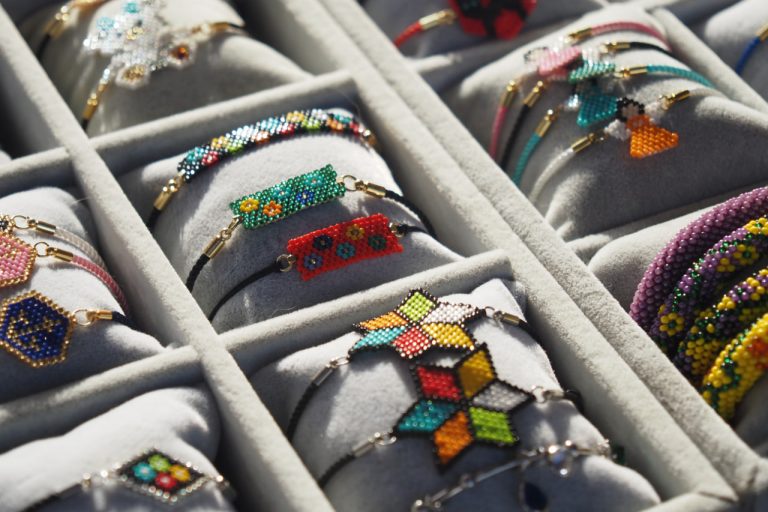Designing a mosaic pendant is a rewarding and creative journey that combines precision, color theory, and personal expression. While the finished result may appear delicate and intricate, the process behind it is structured, step-by-step, and accessible to beginners and professionals alike. Whether you’re designing a piece for yourself, as a gift, or to sell, learning how to approach your project from concept to completion will help you craft a pendant that is both beautiful and meaningful.
Gathering Inspiration
Every mosaic pendant begins with an idea. Inspiration can come from a wide range of sources: nature, architecture, cultural patterns, a favorite color palette, or even a memory. Some artists start with a sketch, while others collect materials and let the textures and shapes dictate the final design. Before picking up any tools, spend time observing the world around you and gather visual references. Look at classic mosaic motifs, stained glass windows, abstract paintings, or ethnic patterns for ideas. Creating a small mood board or design notebook can help you organize your thoughts and establish a theme.
Choosing a Base and Shape
The foundation of your pendant sets the tone for the entire piece. Pendant bases come in various materials such as metal, wood, ceramic, or resin. You can choose a premade bezel (a metal pendant frame) or create a custom shape using polymer clay or wood cutouts. Think about the pendant’s function—is it meant to be light and delicate or bold and eye-catching? Shapes can range from simple circles and ovals to hearts, teardrops, and abstract forms. Make sure the base is sturdy and has a smooth surface suitable for adhering mosaic tesserae.
Selecting a Color Palette
Color is a key part of mosaic jewelry. A well-chosen palette can elevate a design from ordinary to stunning. Start by deciding the emotional tone of your piece. Do you want it to be vibrant and energetic, calm and neutral, romantic and soft, or bold and modern? Choose three to five core colors that complement each other and consider including metallics or iridescent materials for added shine. Use a color wheel or palette generator if you’re unsure how to begin. Remember that in a small piece like a pendant, every color and contrast makes a big impact.
Choosing Materials
Once you have a base and color palette, it’s time to select your tesserae—the small pieces that will make up your design. Common materials include:
- Glass (smalti, stained, or vitreous)
- Ceramic or porcelain fragments
- Natural stones and crystals
- Shell and mother-of-pearl
- Polymer clay
- Mirror or metallic pieces
- Beads and recycled jewelry
Consider the scale of your design when choosing materials. Small, fine tesserae allow for more detail, while larger pieces create bold, geometric looks. Test your materials by arranging them loosely on the base to see how they interact before committing to glue.
Planning the Layout
Sketch your design lightly onto the base using a pencil or marker. If your design is detailed, you may want to use transfer paper or trace it onto the base. Begin by outlining the most important areas of your design, such as a flower’s center or a geometric border. Pay attention to how the tesserae will flow. Use curved lines for organic, natural shapes or straight lines for structured, architectural designs. You can also use andamento—the flow and direction of tesserae—to enhance movement and depth in your work.
Cutting and Shaping Tesserae
Not all tesserae come ready-made. Cutting is often necessary to fit your pieces perfectly into the design. Tools for this step may include tile nippers, wheeled glass cutters, or mosaic scorers. Always wear safety glasses when cutting glass or ceramic. Cut slowly and carefully, and keep a small container nearby to collect shards and fragments. Take your time shaping pieces to fit your layout—precision here will greatly improve the final result.
Adhering the Pieces
Once you are satisfied with your layout, begin attaching the tesserae to the base using a strong adhesive. Choose an adhesive appropriate for both the base material and the tesserae. Common options include jewelry epoxy, E6000, or mosaic glue. Apply the adhesive sparingly with a toothpick or small applicator, and press each piece firmly into place. Work in small sections and allow the glue to dry thoroughly. Be mindful of spacing between tesserae—tight spacing will result in minimal grout lines, while wider spacing allows more grout to show.
Grouting (Optional)
Grouting is the process of filling the spaces between tesserae to unify the design and protect the surface. While not always necessary for pendants, especially in tight-set designs, grouting can create a finished, professional look. Choose a fine-grit grout in a color that complements your design. Use a plastic spatula or gloved finger to press the grout into the spaces. Wipe away excess with a damp sponge and polish the tesserae once the grout begins to set. Allow the pendant to cure for several hours or overnight.
Finishing Touches
Once your piece is dry and complete, clean the surface to remove any haze or adhesive residue. You may want to seal the grout to improve durability and water resistance. Attach a jump ring or bail to the pendant base so it can be worn on a chain or cord. Consider packaging your pendant in a handmade box or pouch if it’s meant as a gift or for sale.



